Abstract
This report describes the design and conduct of two sequential historical prospective morbidity surveys of workers and residents from the Upper Ottawa Street Landfill Site in Hamilton, Ontario. The workers study was carried out first and was a hypothesis-generating study. Workers and controls were administered a health questionnaire, which was followed by an assessment of recall bias through medical chart abstraction. Multiple criteria were used to identify health problems associated with landfill site exposure. Those problems with highest credibility included clusters of respiratory, skin, narcotic, and mood disorders. These formed the hypothesis base in the subsequent health study of residents living adjacent to the landfill site. In that study, the association between mood, narcotic, skin, and respiratory conditions with landfill site exposure was confirmed using the following criteria: strength of association; consistency with the workers study; risk gradient by duration of residence and proximity to the landfill; absence of evidence that less healthy people moved to the area; specificity; and the absence of recall bias. The validity of these associations were reduced by three principal problems: the high refusal rate among the control population; socioeconomic status differences between the study groups; and the fact that the conditions found in excess were imprecisely defined and potentially interchangeable with other conditions. Offsetting these problems were the multiple criteria used to assess each hypothesis, which were applied according to present rules. Evidence is presented that supports the hypothesis that vapors, fumes, or particulate matter emanating from the landfill site, as well as direct skin exposure, may have lead to the health problems found in excess. Evidence is also presented supporting the hypothesis that perception of exposure and, therefore, of risk, may explain the results of the study. However, based on the analyses performed, it is the conclusion of the authors that the adverse effects seen were more likely the result of chemical exposure than of perception of risk.
Full text
PDF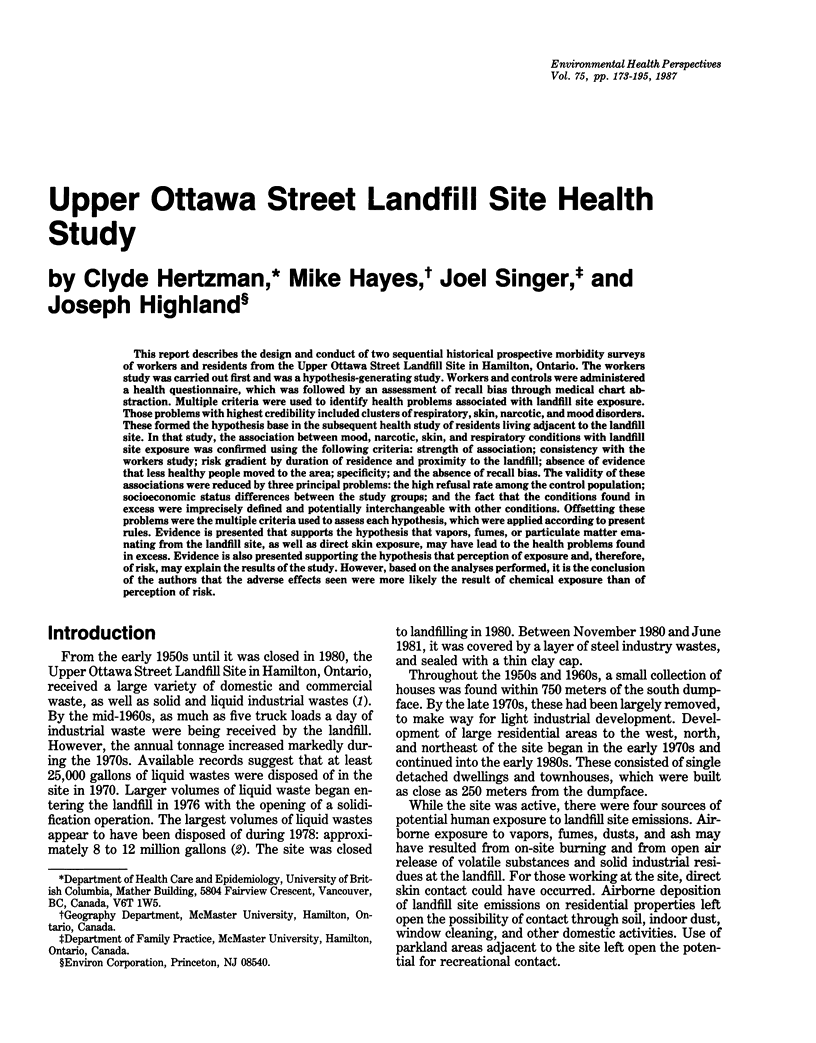
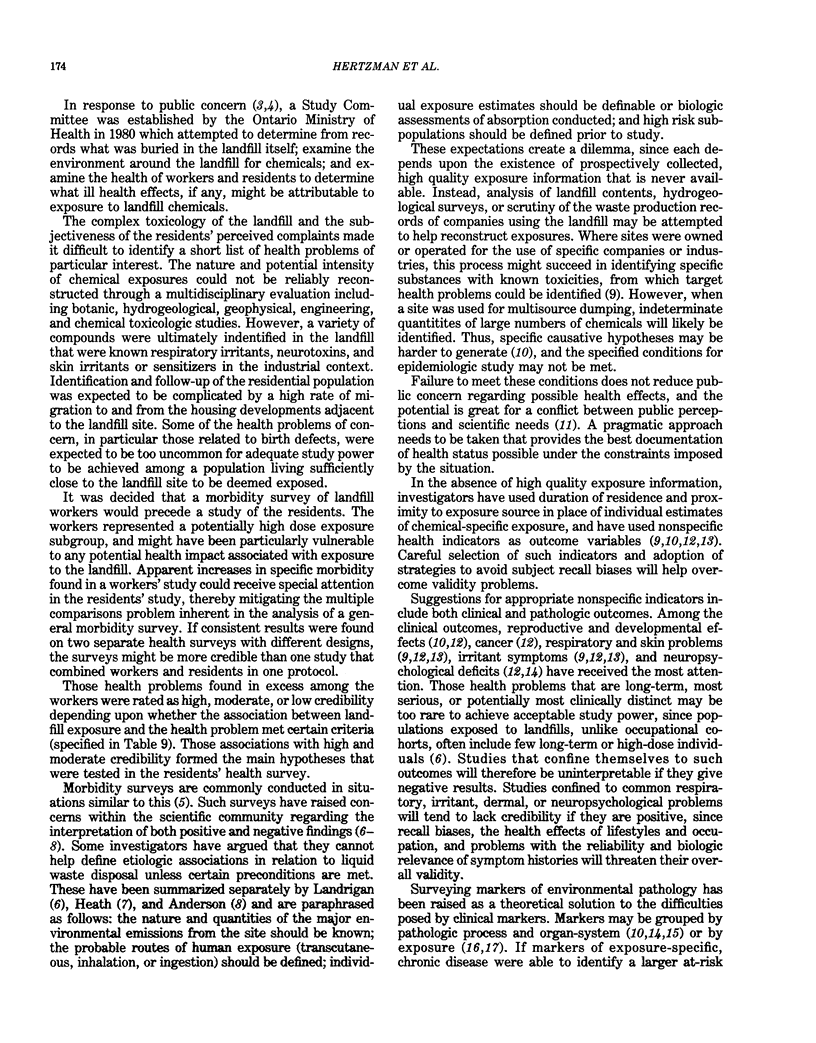


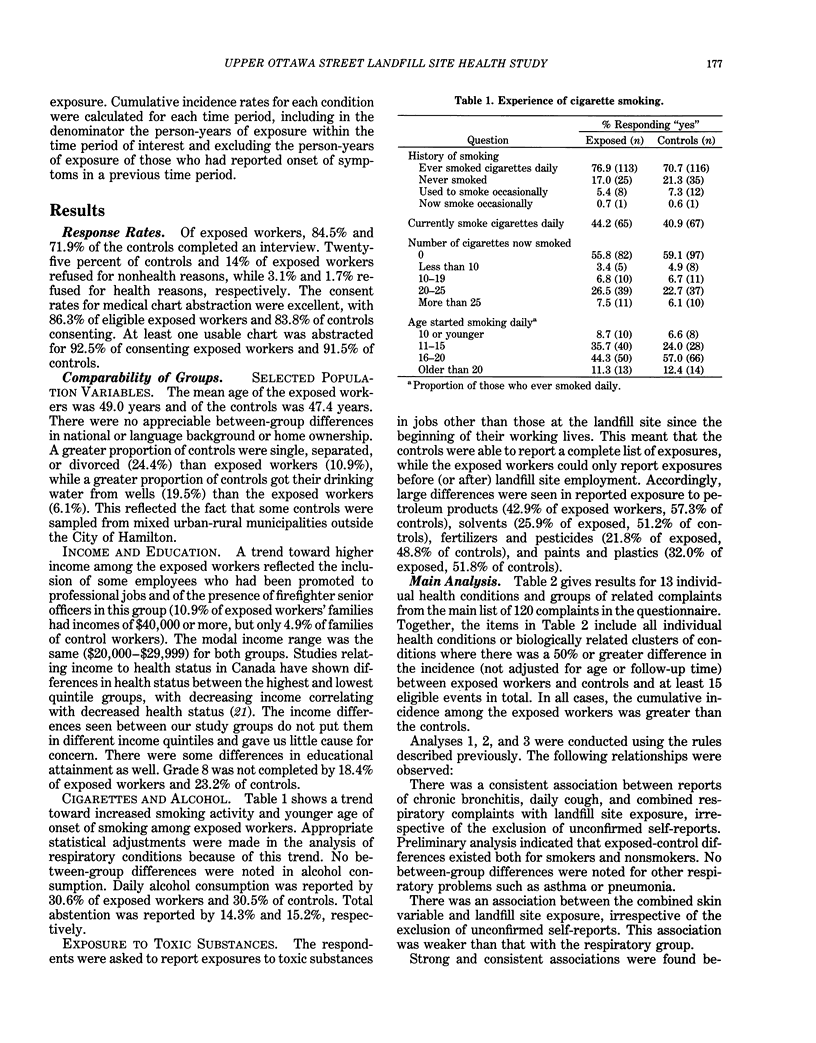
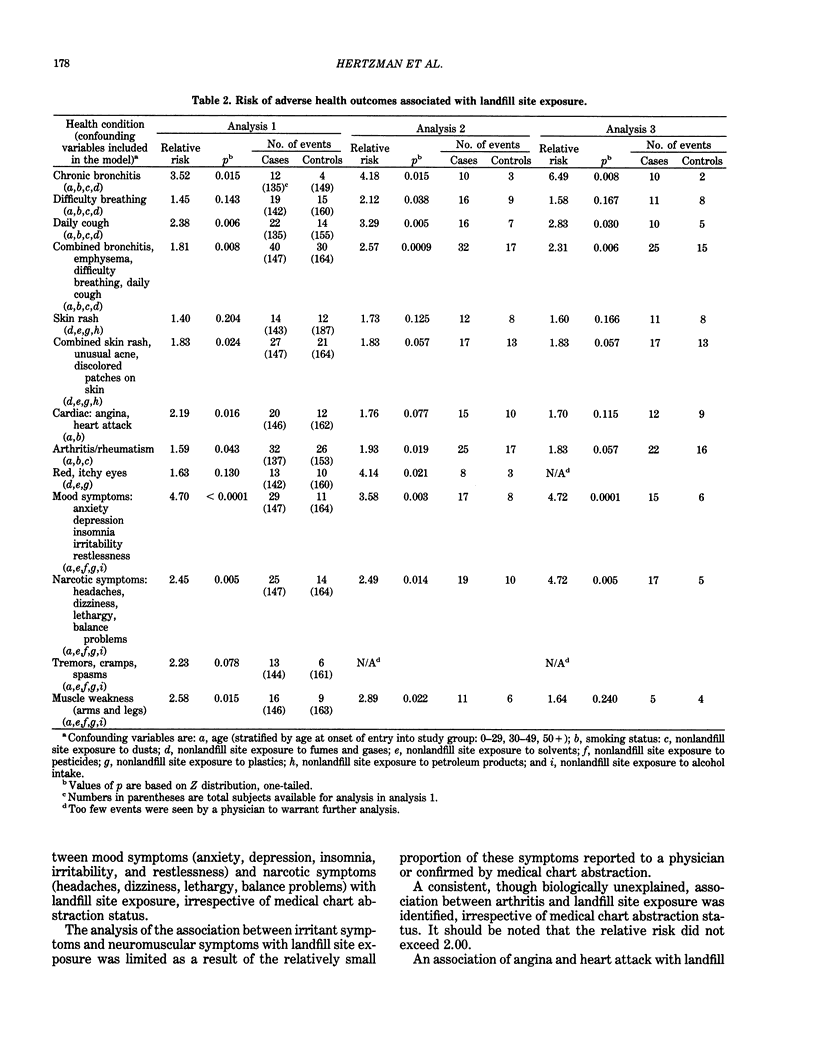



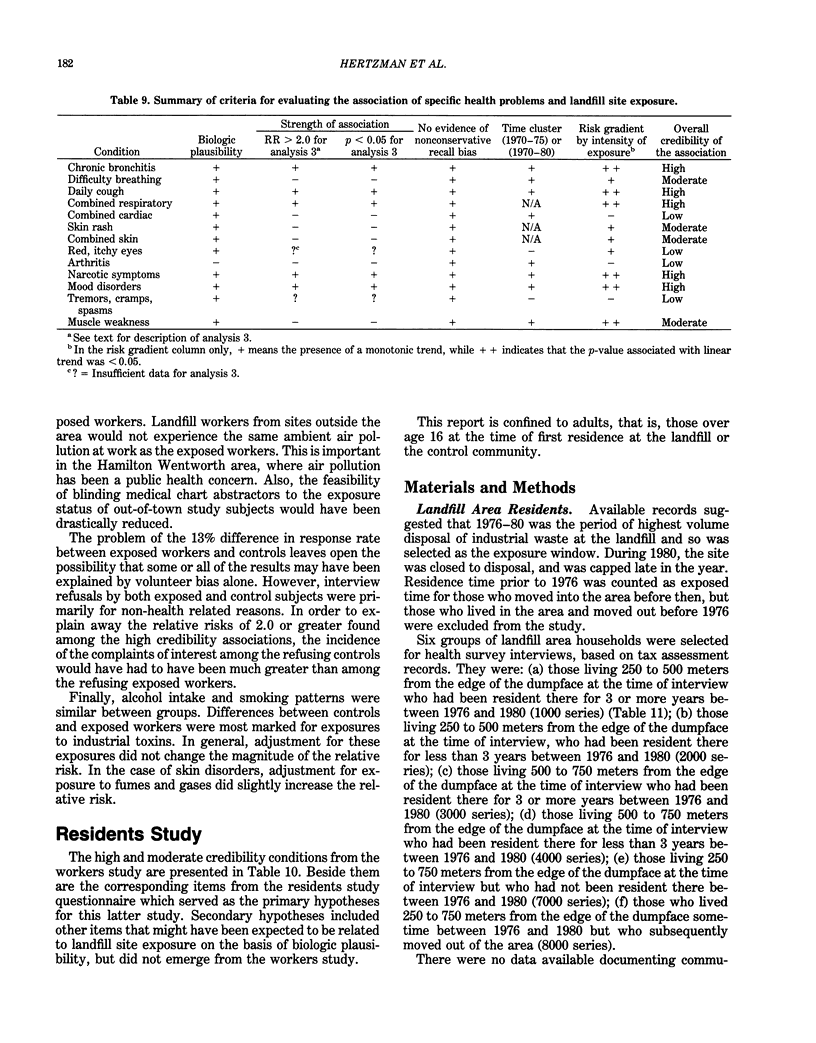




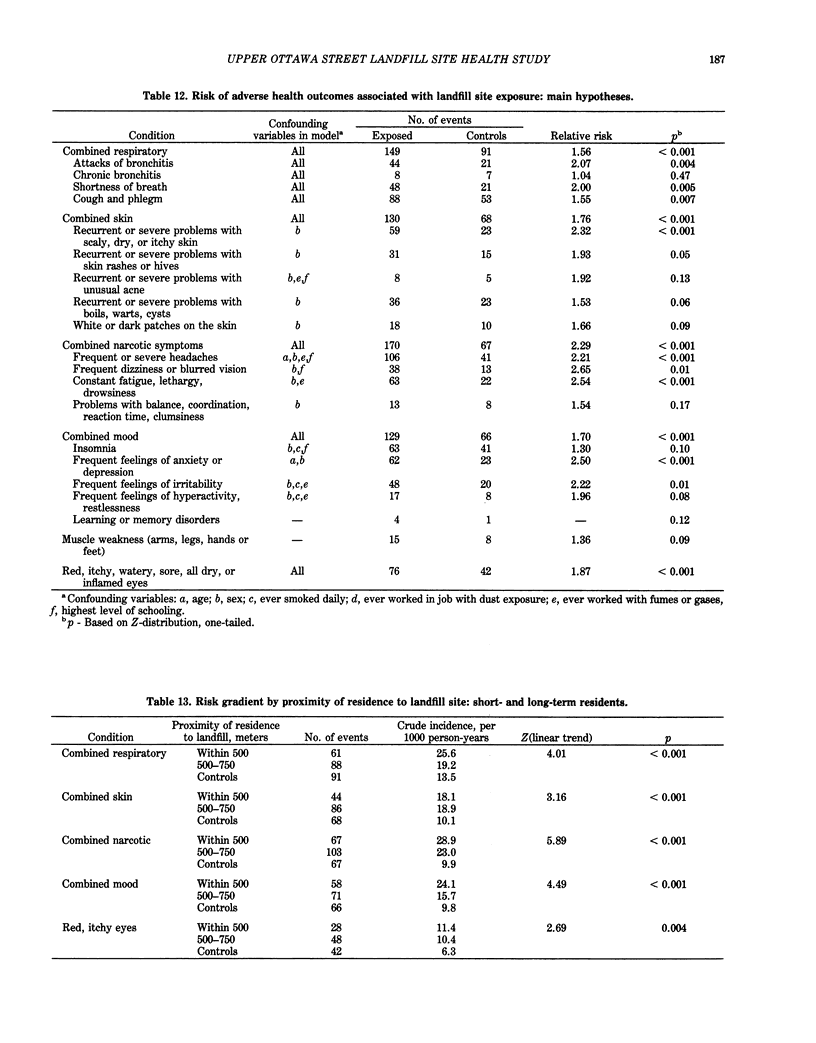

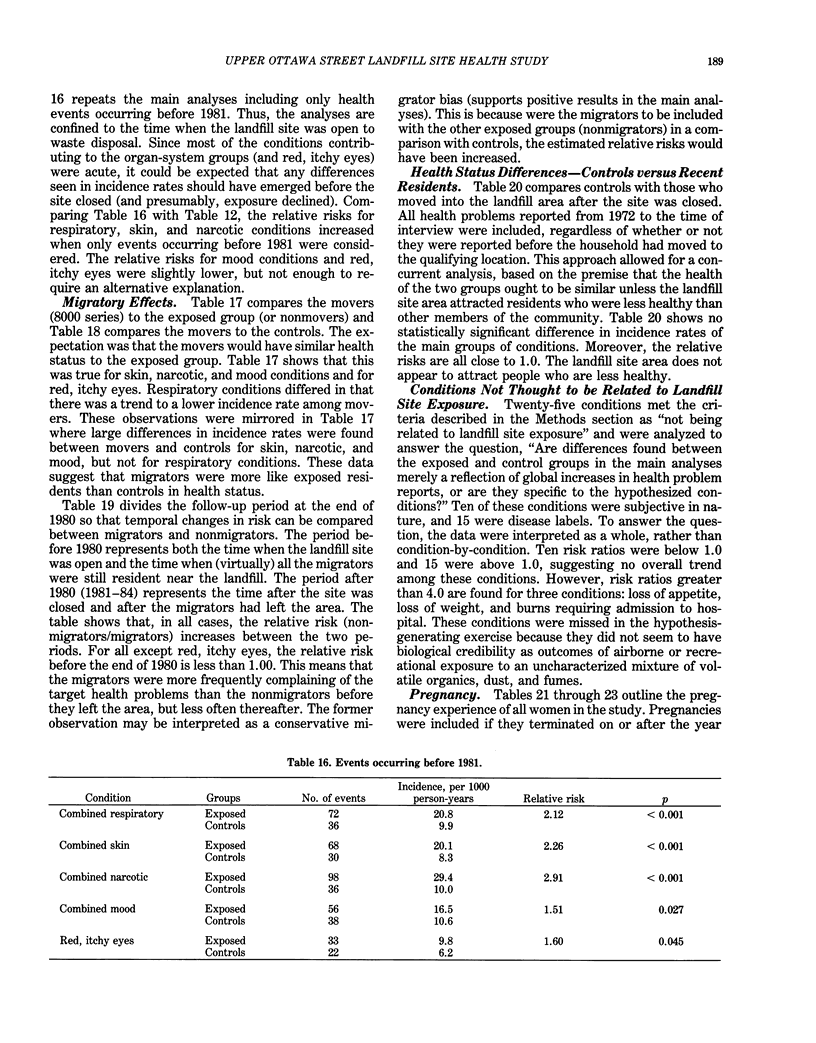

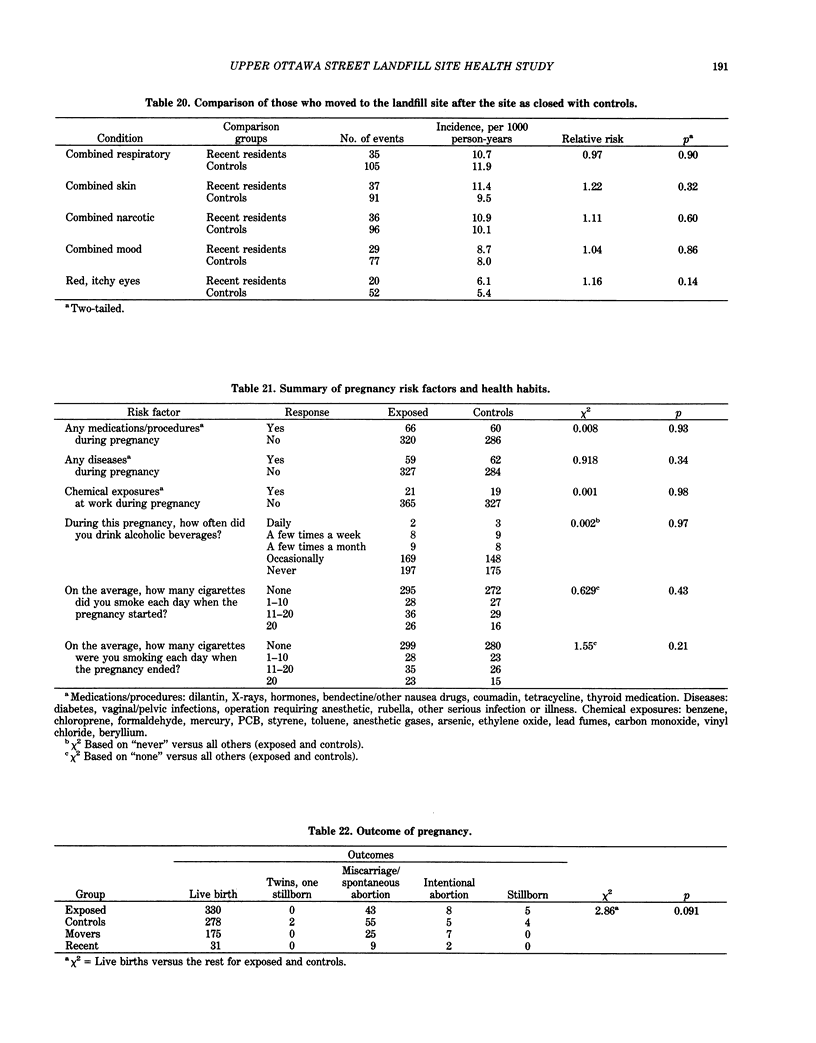
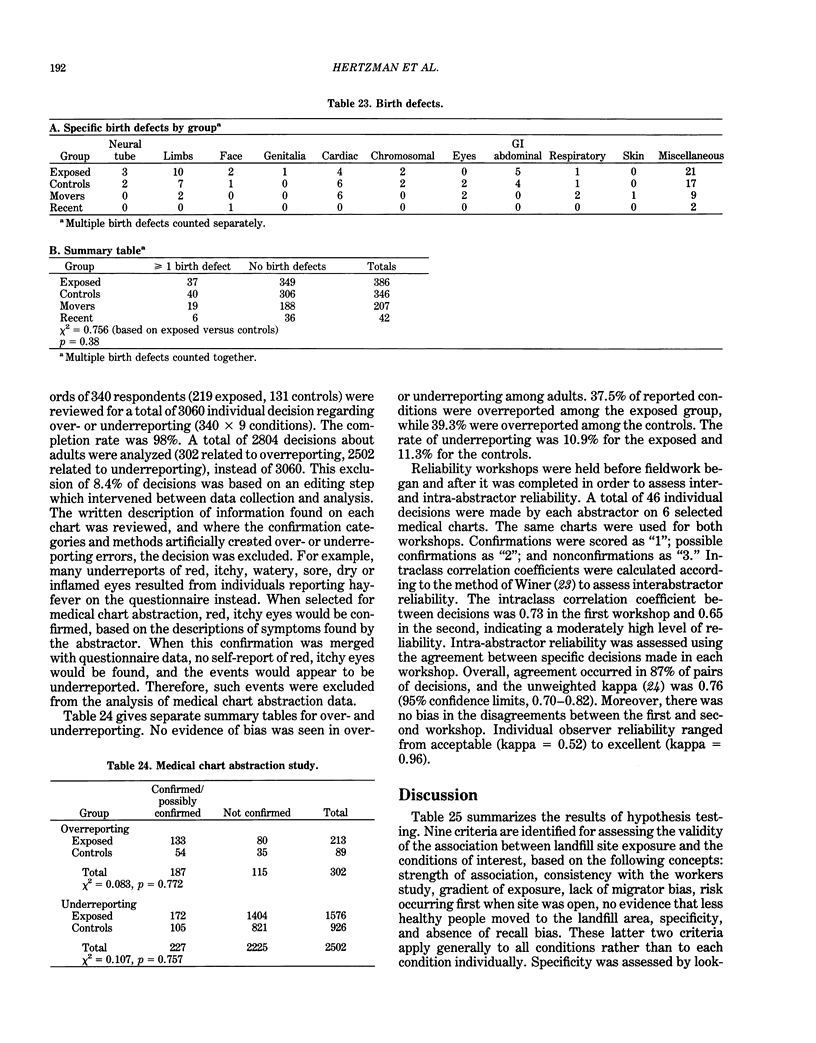


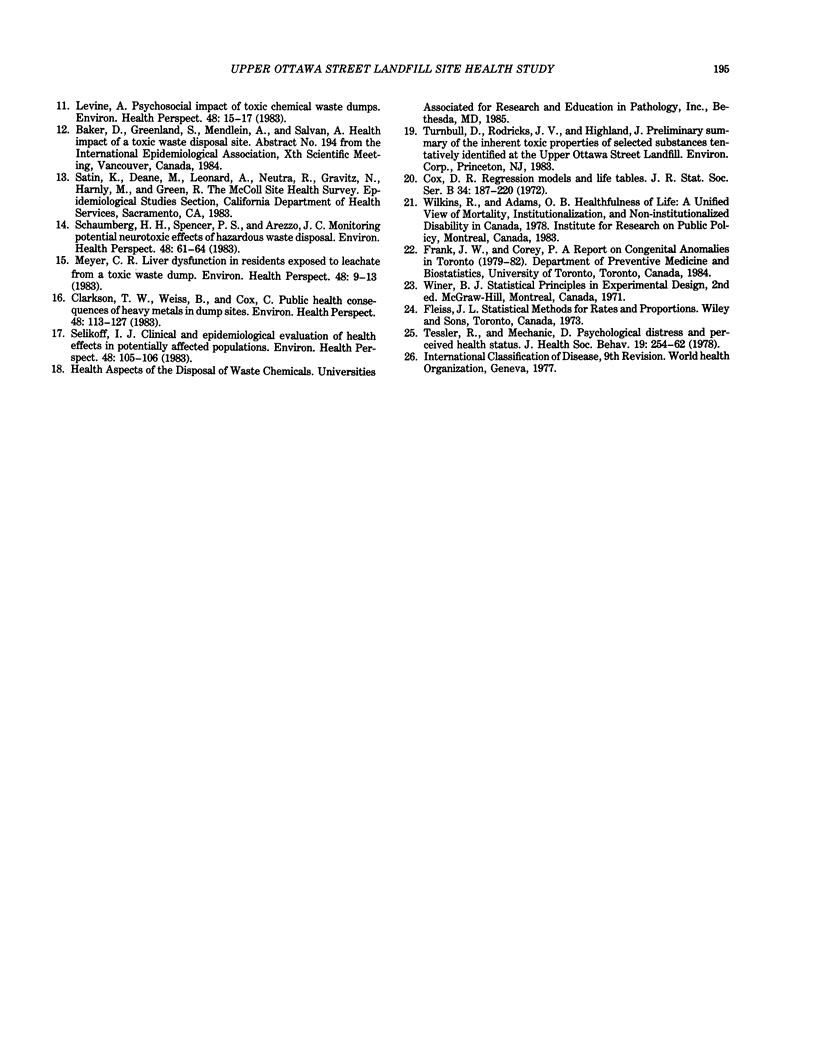
Selected References
These references are in PubMed. This may not be the complete list of references from this article.
- Anderson H. A. Evolution of environmental epidemiologic risk assessment. Environ Health Perspect. 1985 Oct;62:389–392. doi: 10.1289/ehp.8562389. [DOI] [PMC free article] [PubMed] [Google Scholar]
- Bolsen B. Toxic wastes' health effects? No one has the answers. JAMA. 1981 Sep 25;246(13):1393, 1397-8. doi: 10.1001/jama.246.13.1393. [DOI] [PubMed] [Google Scholar]
- Clarkson T. W., Weiss B., Cox C. Public health consequences of heavy metals in dump sites. Environ Health Perspect. 1983 Feb;48:113–127. doi: 10.1289/ehp.8348113. [DOI] [PMC free article] [PubMed] [Google Scholar]
- Heath C. W., Jr Field epidemiologic studies of populations exposed to waste dumps. Environ Health Perspect. 1983 Feb;48:3–7. doi: 10.1289/ehp.83483. [DOI] [PMC free article] [PubMed] [Google Scholar]
- Landrigan P. J. Epidemiologic approaches to persons with exposures to waste chemicals. Environ Health Perspect. 1983 Feb;48:93–97. doi: 10.1289/ehp.834893. [DOI] [PMC free article] [PubMed] [Google Scholar]
- Levine A. Psychosocial impact of toxic chemical waste dumps. Environ Health Perspect. 1983 Feb;48:15–17. doi: 10.1289/ehp.834815. [DOI] [PMC free article] [PubMed] [Google Scholar]
- Levine R., Chitwood D. D. Public health investigations of hazardous organic chemical waste disposal in the United States. Environ Health Perspect. 1985 Oct;62:415–422. doi: 10.1289/ehp.8562415. [DOI] [PMC free article] [PubMed] [Google Scholar]
- Meyer C. R. Liver dysfunction in residents exposed to leachate from a toxic waste dump. Environ Health Perspect. 1983 Feb;48:9–13. doi: 10.1289/ehp.83489. [DOI] [PMC free article] [PubMed] [Google Scholar]
- Schaumburg H. H., Spencer P. S., Arezzo J. C. Monitoring potential neurotoxic effects of hazardous waste disposal. Environ Health Perspect. 1983 Feb;48:61–64. doi: 10.1289/ehp.834861. [DOI] [PMC free article] [PubMed] [Google Scholar]
- Selikoff I. J. Clinical and epidemiological evaluation of health effects in potentially affected populations. Environ Health Perspect. 1983 Feb;48:105–106. doi: 10.1289/ehp.8348105. [DOI] [PMC free article] [PubMed] [Google Scholar]
- Tessler R., Mechanic D. Psychological distress and perceived health status. J Health Soc Behav. 1978 Sep;19(3):254–262. [PubMed] [Google Scholar]


